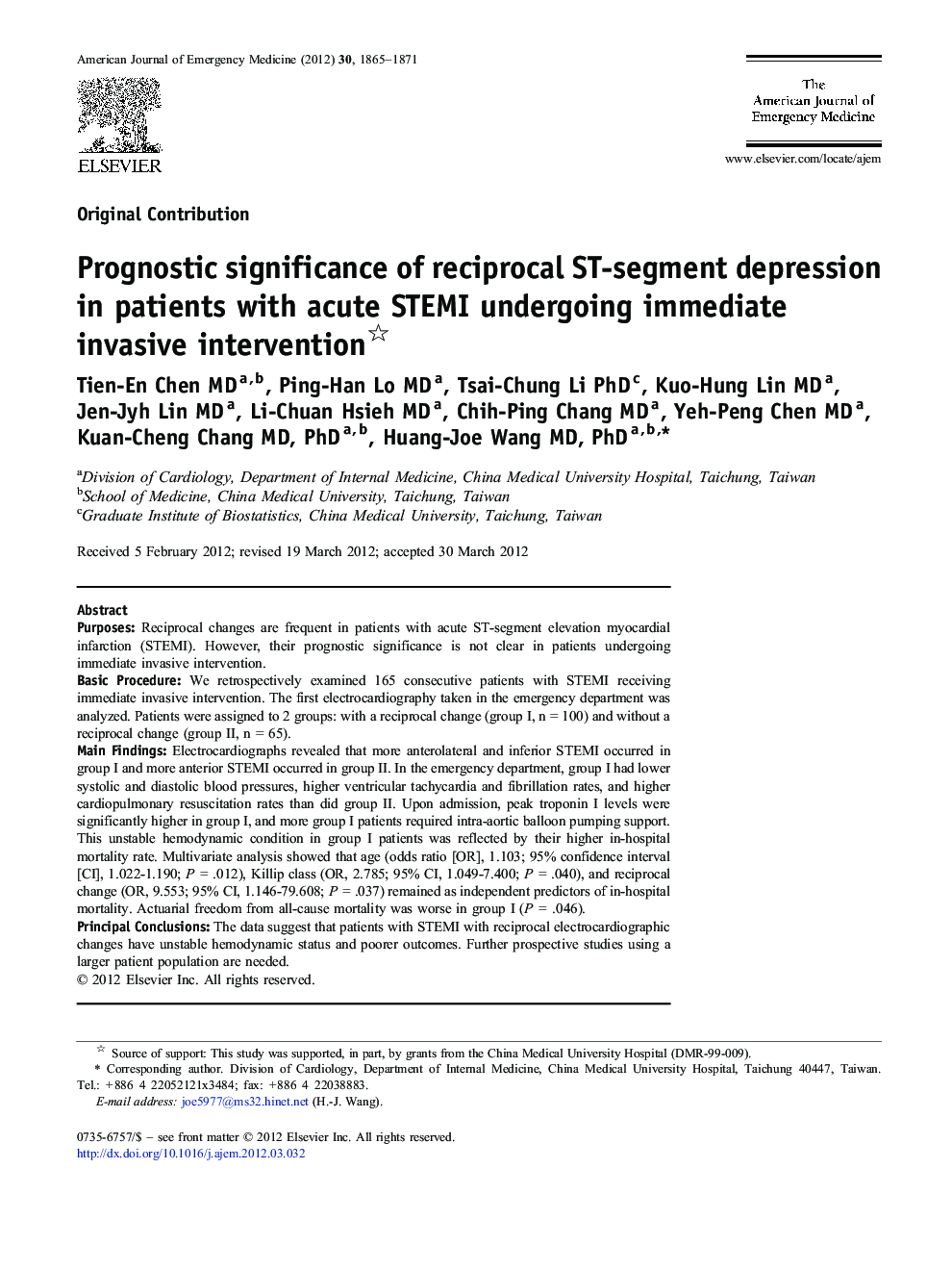| Article ID | Journal | Published Year | Pages | File Type |
|---|---|---|---|---|
| 3224907 | The American Journal of Emergency Medicine | 2012 | 7 Pages |
PurposesReciprocal changes are frequent in patients with acute ST-segment elevation myocardial infarction (STEMI). However, their prognostic significance is not clear in patients undergoing immediate invasive intervention.Basic ProcedureWe retrospectively examined 165 consecutive patients with STEMI receiving immediate invasive intervention. The first electrocardiography taken in the emergency department was analyzed. Patients were assigned to 2 groups: with a reciprocal change (group I, n = 100) and without a reciprocal change (group II, n = 65).Main FindingsElectrocardiographs revealed that more anterolateral and inferior STEMI occurred in group I and more anterior STEMI occurred in group II. In the emergency department, group I had lower systolic and diastolic blood pressures, higher ventricular tachycardia and fibrillation rates, and higher cardiopulmonary resuscitation rates than did group II. Upon admission, peak troponin I levels were significantly higher in group I, and more group I patients required intra-aortic balloon pumping support. This unstable hemodynamic condition in group I patients was reflected by their higher in-hospital mortality rate. Multivariate analysis showed that age (odds ratio [OR], 1.103; 95% confidence interval [CI], 1.022-1.190; P = .012), Killip class (OR, 2.785; 95% CI, 1.049-7.400; P = .040), and reciprocal change (OR, 9.553; 95% CI, 1.146-79.608; P = .037) remained as independent predictors of in-hospital mortality. Actuarial freedom from all-cause mortality was worse in group I (P = .046).Principal ConclusionsThe data suggest that patients with STEMI with reciprocal electrocardiographic changes have unstable hemodynamic status and poorer outcomes. Further prospective studies using a larger patient population are needed.
